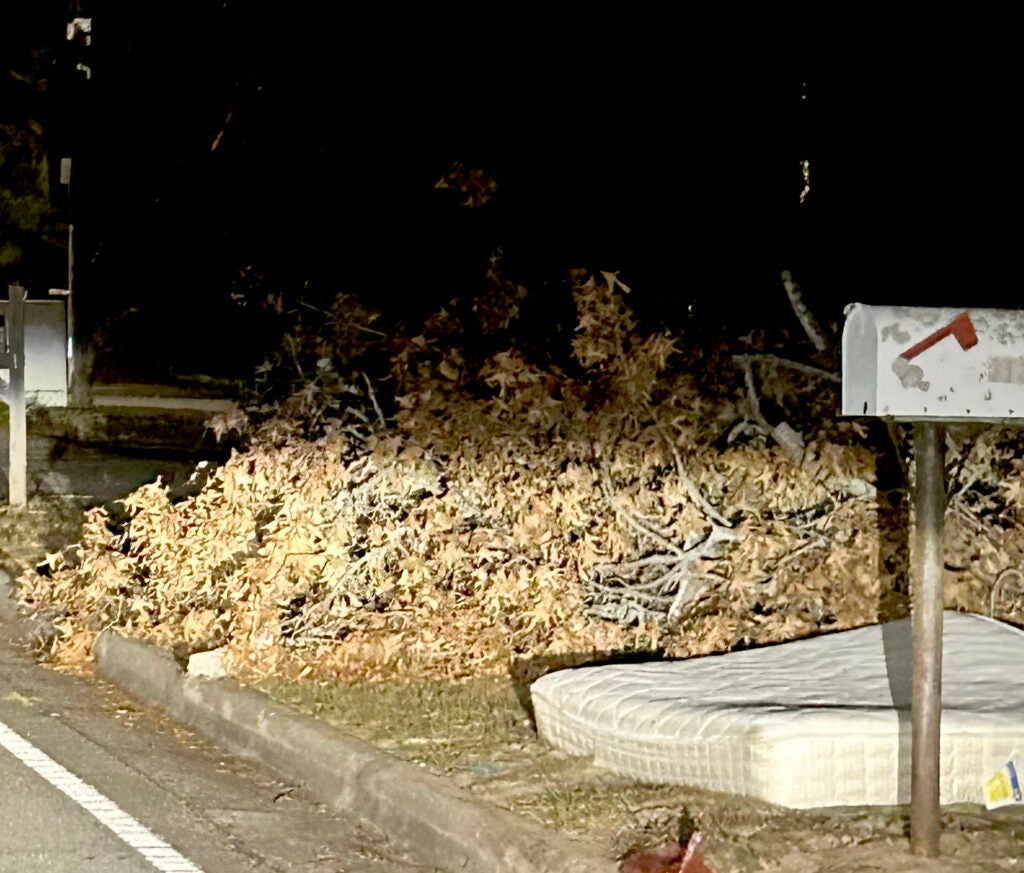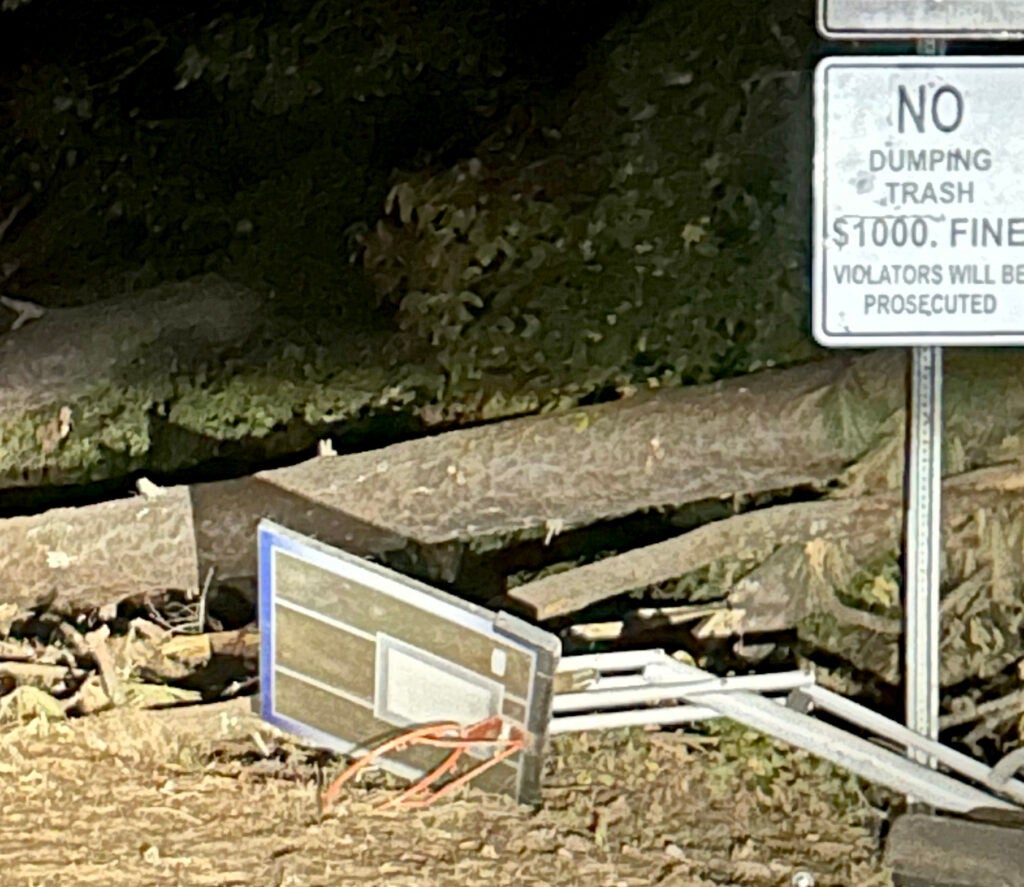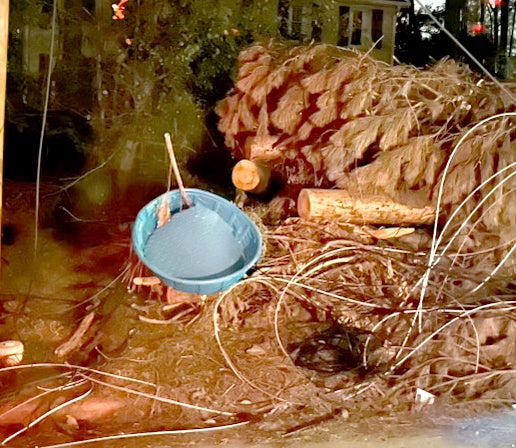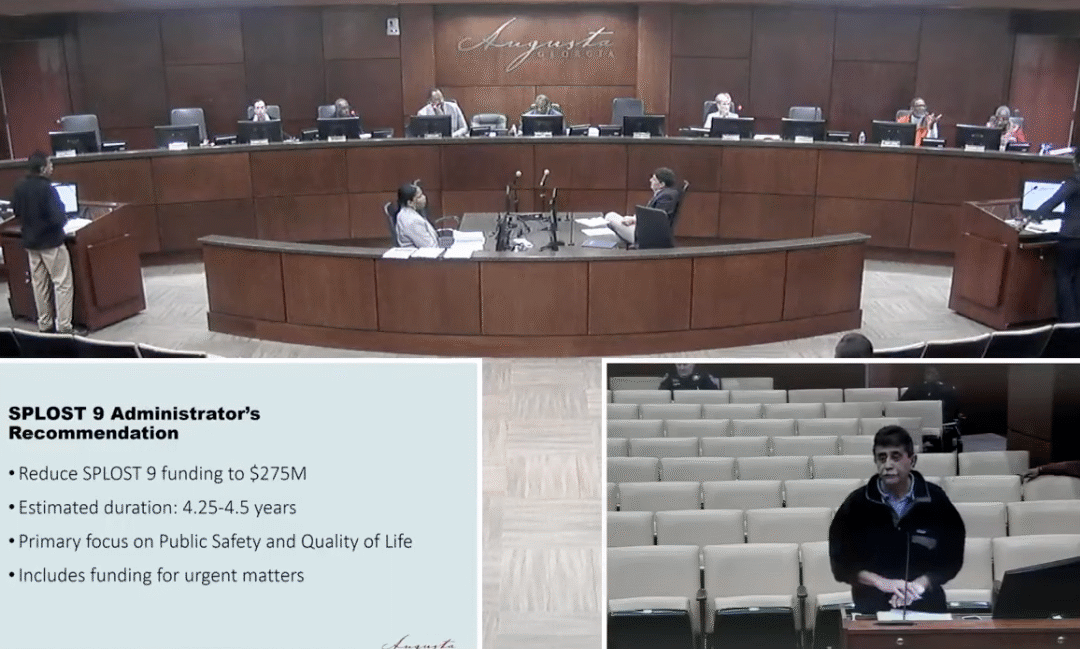Residents who put inappropriate debris in their piles risk being skipped and slowing the process for everyone.
That’s the word from city officials such as Commissioner Catherine Smith McKnight, Mayor Garnett Johnson and others.
Johnson has repeatedly urged residents not to throw items such as fences into their debris piles.
McKnight said she’s seen mattresses, kiddie pools, fences and regular trash mixed into debris piles in districts 3, 7 and beyond, and it won’t do.

“People need do a better job of sorting their debris,” she said. “The grinders can’t grind up plastic and people’s fences.”
Once it leaves the curb, one of the dozen or so sub-contracted haulers takes the debris to one of what are currently four sites, where it is ground into mulch.
The grinders can’t take anything but vegetative debris, said Steve Cassell, the former city traffic engineer now helping oversee the massive cleanup effort for Infrastructure Systems Management.
According to official city guidance, residents are asked not to block roads or driveways. There is no requirement for cut length. The types of debris currently being collected include:
- Branches and limbs
- Trees
- Trunks
Mixing “bagged, construction or demolition debris with vegetative debris… will significantly slow down the removal process,” officials said.
Residents are also asked to place debris away from utility poles, low-hanging utility lines, water meters, mailboxes and trash cans – to avoid missing regular garbage collection.

Haulers will sometimes remove small amounts of inappropriate debris from piles, but if it’s too much, the pile will get skipped, Cassell said.
“I would recommend people pull that stuff out,” Cassell said.
As will piles entangled with utility lines of any sort.
“If it’s attached to a pole, it will yank a pole down,” he said.
Ceres, the contractor hired to remove the debris, began work Oct. 11 and has removed just over 825,000 cubic yards of debris so far, Cassell said. The number is expected to exceed 2 million cubic yards.
Contractors are currently engaged in a “first pass” of main routes and hardest hit areas. But for many residents, the trucks can’t arrive fast enough.
Cassell said eventually, all the debris will be removed.
“It’s all going to get picked up. We are mapping every road. Some people are going to be first and some people are going to be last,” he said.
The haulers are assigned based on where the damage is. Paid by the cubic yard by the hour, they want the big loads, Cassell said.
“I can’t police every pile, but I know they are coming in with full trucks,” he said.
The debris sites are located at Lake Olmstead Stadium, Eisenhower Park, Fleming Park and the Augusta Landfill. Eventually another site will open at Hyde Park.
If Augusta properly manages its debris, FEMA is expected to reimburse the city 100% of the cost for the first 90 days. For the next 90-180 days, FEMA reimburses 75%, but additional state funding is available.











